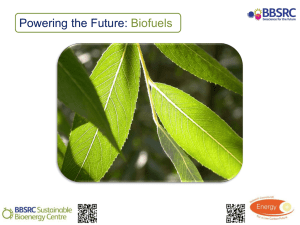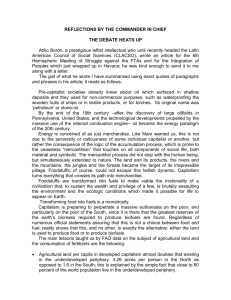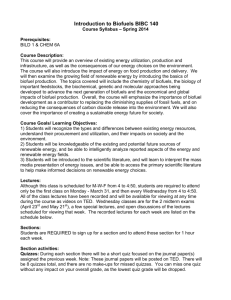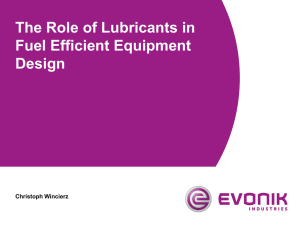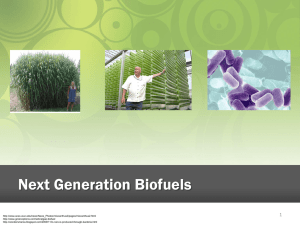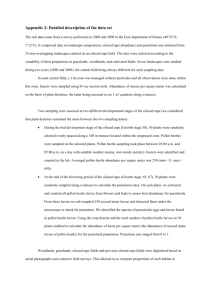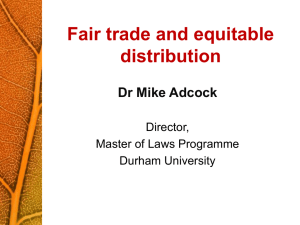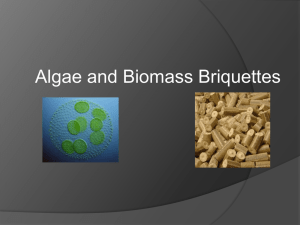Oil viscosity
advertisement
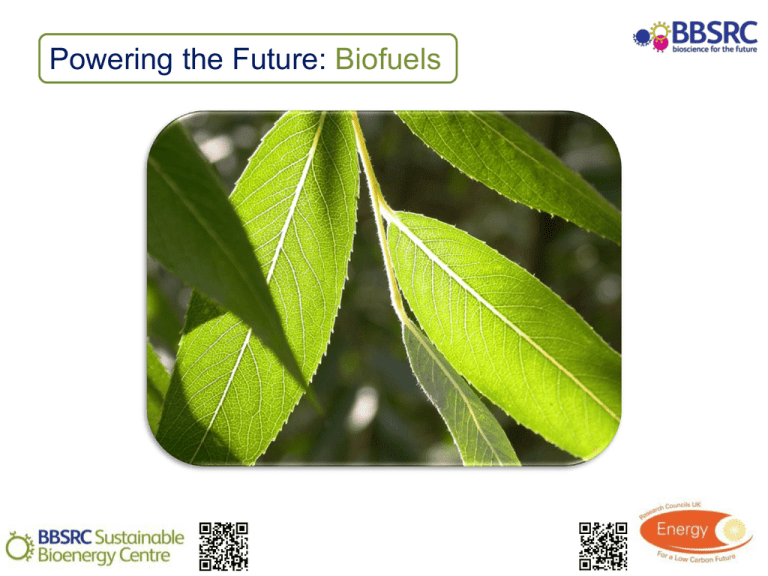
Powering the Future: Biofuels Activity: Oil viscosity • Explain the importance of identifying fuel viscosity • Carry out viscosity tests on a variety of different fuels • Evaluate the pros and cons of different transport fuels Facts and Figures • To help combat climate change the UK has a target to reduce carbon emissions by 80% by 2050. • 30% of the UK renewable energy could come from biomass heat and electricity by 2020. • To meet the European Renewable Energy Directive, the UK is aiming for 10% of transport energy to be from renewable sources by 2020. • 18% of the sustainable renewable road transport fuel used in the UK between April 2012 and April 2013 came from UK feedstocks. © John Innes Centre Oilseed rape is currently grown for use as a food crop as well as production of biofuels. In 2009 the UK biofuel produced from oilseed rape was13% of total biofuel feedstocks. Estimates suggest that it would require 40% of the UK arable land to produce 5% of the UK transport fuel from oilseed rape. It is therefore vital that research finds alternatives to current biofuels. © John Innes centre Oilseed rape exploding pods: Controlling pod shattering could lead to greatly increased yields of oilseed rape. © Plymouth Marine Laboratory Algae light microscope image: In order to develop biofuels from algae, research is being conducted to find suitable strains that produce high levels of oils, can tolerate heat and high concentrations of carbon dioxide, and are easy to harvest. Bubble Columns: Microalgae can be grown in large bioreactors and continually harvested unlike crops or macroalgae. They could be grown using the waste carbon dioxide from industrial processes, power stations or waste treatment plants. The oil they produce can then be converted into liquid fuel. © Plymouth Marine Laboratory © Plymouth Marine Laboratory Scanning Electron Microscope image of algae: Algae can harvest the power of the sun through photosynthesis and convert this into biomass including oil. They are fast growing and more efficient than plants at absorbing carbon dioxide. © Plymouth Marine Laboratory Fluorescent staining of oil in algae: In order to develop algal biofuels research is being conducted to find suitable strains that produce high levels of oils, can tolerate heat and high concentrations of carbon dioxide, and are easy to harvest. Viscosities and molecular structures Substance Dynamic Viscosity @ 25°C (mPa.s) Refined sunflower oil 48.98 Refined corn oil 51.44 Olive oil 63.28 Glycerol 1420 (20°C) Biodiesel 5.75 Bioethanol Water 1.1 (20°C) 1 (20°C) Molecular structure 10% (sat f.a.s) 20% (monounsat f.a.s) 70% (polunsat.f.a.s) 12% (sat f.a.s) 31%(monounsat f.a.s) 57% (polunsat.f.a.s) 15% (sat f.a.s) 75% (monounsat f.a.s) 10% (polunsat.f.a.s) C3H8O3 RCOOCH3 C2H5OH H2O Activity: Oil viscosity • Explain the importance of identifying fuel viscosity • Carry out viscosity tests on a variety of different fuels • Evaluate the pros and cons of different transport fuels Contributors
